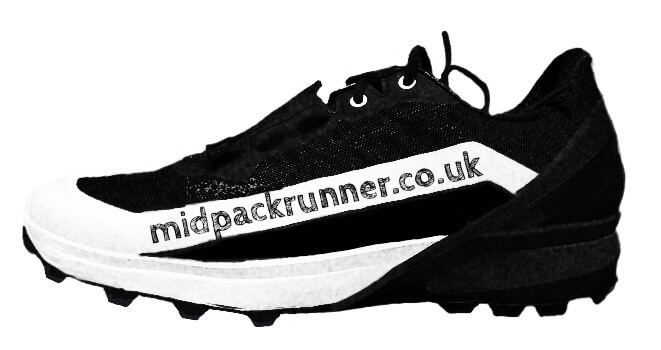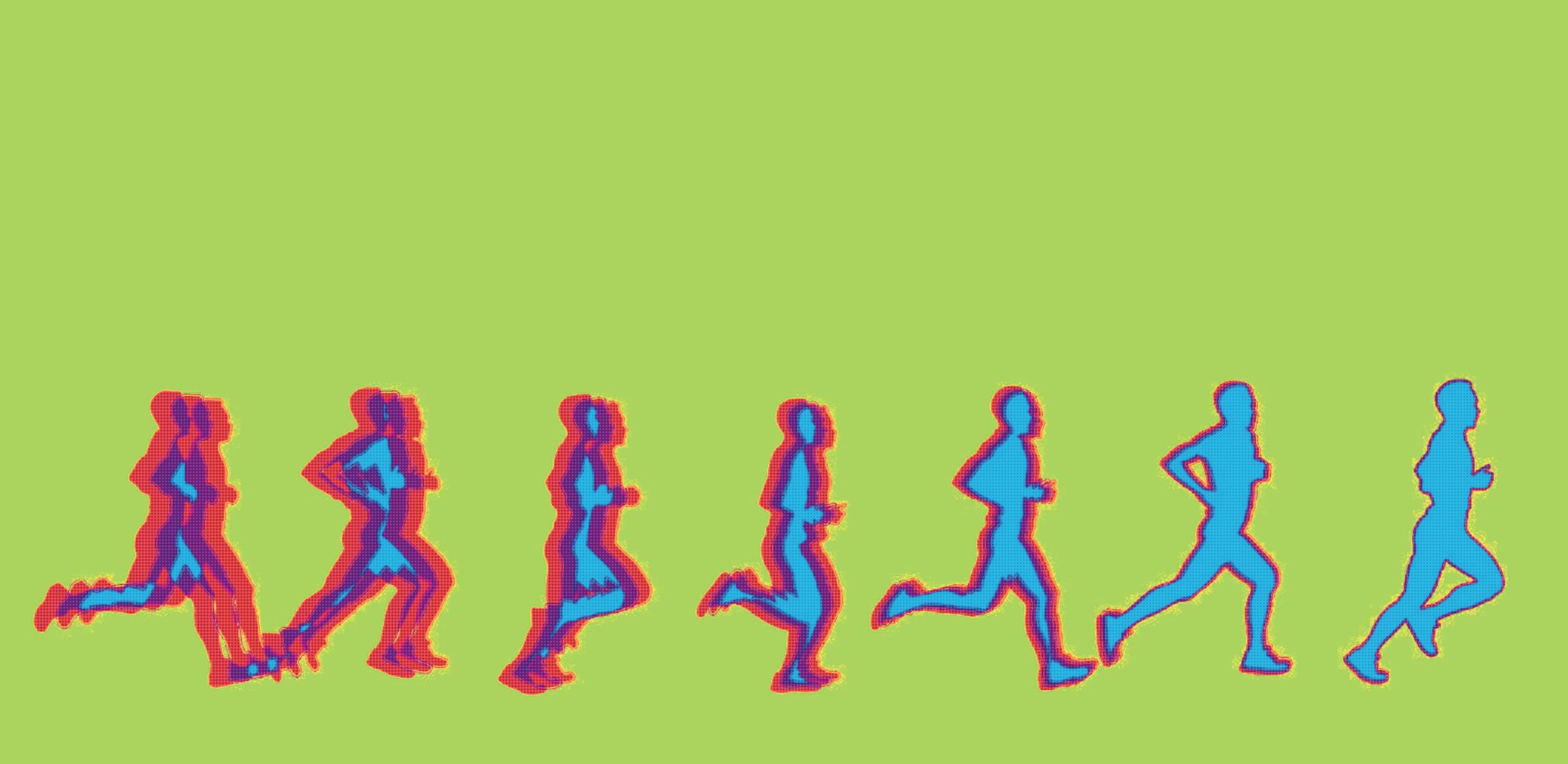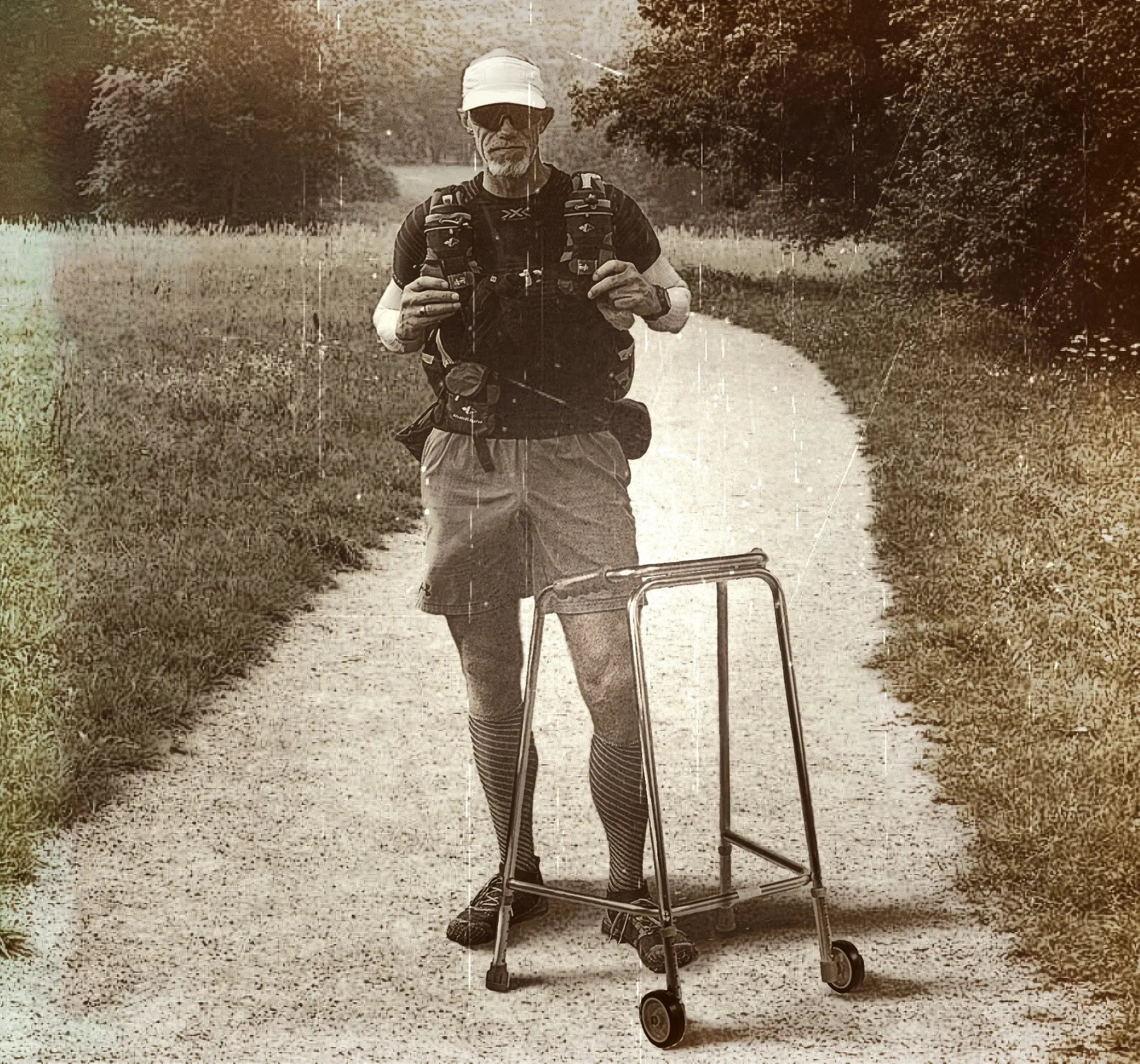Foot Striking - which is best and does it matter anyway?
I wanted to write a little about this, firstly because it is just interesting to me and secondly, because I do have a very particular, personal perspective. I had been playing about with the piece around the time of my recent calf injury and if anything, that brought the subject into even sharper focus in my thoughts.
Most new runners who are starting to run regularly and are thinking about buying shoes etc are most commonly bombarded with questions about their running gait. Many will have gone to their local running shop where the helpful sales assistant will watch them run on a treadmill, make an assessment then try to sell them a random pair of shoes and an expensive pair of insoles to magically correct their particular running malfunction.
If you ask me about my gait, I underpronate (supinate) a little. Maybe a bit more than a little. Anyway, that doesn’t matter because it isn’t really what I want to discuss right now.
Types of foot strike
There are three commonly accepted types of running foot strike but that is largely where commonality ends because there is considerable lack of agreement as to the importance of foot striking, the relative merits of different foot strikes, the injury implications and most significantly, which strike is more or less efficient than any of the others.
Don’t worry. I am not going to reproduce a whole raft of scientific and biomechanical research to bamboozle you with. I may make oblique reference to some opinion I have come across but what surprised me the most is the complete spectrum of views that are available on the subject. Certainly, I cannot find any piece of research that appears to be definitive and whilst there is broad agreement on some aspects of the topic, the questions of efficiency and the ‘best’ running foot strike are largely unanswered, persuasively at least in my view.
I am sure a lot of runners will already know but for anyone who might be scratching their head, there are three accepted types of foot strike.
Forefoot strike – ground contact is made with the balls of the feet, then pushing off the balls of the feet and the toes. The heel or rear portion of the foot makes little or no contact with the ground.
Midfoot strike – ground contact is made with the middle of the foot, i.e. equal strike pressure between the toes and heel, rolling forward to push off through the forefoot.
Rearfoot or Heel strike – ground contact is made with the rear of the foot or heel, rolling forward through the midfoot to push off from the forefoot.
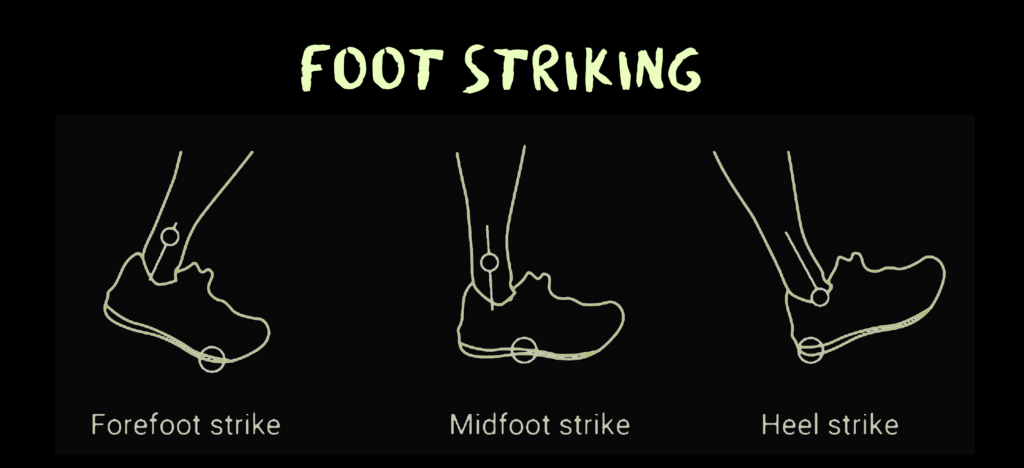
Now, the first false assumption I discovered I had made when looking more closely into this subject is that the majority, if not all runners know what their foot strike is. The research I have looked at suggests that there might be a surprising percentage of runners who don’t really know because they have never really considered it. They just go out and run. Now, it appears that is far from a bad thing, but I’ll come back to that later.
Most research I have looked at appears to be in agreement that by far the majority of runners are heel strikers. Some surveys of marathon participants suggest that well over 80% of runners in the surveyed event were heel strikers. That should really come as no surprise. Just about all of us heel strike when we walk, on level surfaces at least. It seems natural that would then extend to running form.

Forefoot striking is most commonly associated with sprinting, where the biomechanics of increased speed, forward body incline etc almost force the runner up onto the forefoot or toes in order to be able to deliver the required pace. It is however another false assumption to conclude that all elite runners in all distance disciplines are forefoot strikers. This appears not to be the case as it seems that many elite distance runners are heel strikers.
Injury Risk
Many studies appear to have looked at injury risk and whether or not a particular foot strike leads more commonly to injury. However, there appears to be no persuasive evidence that any one foot strike is more likely to cause or lead to injury than any other. For example, it has been widely held that heel striking increases the risk of knee injury due to the particular impact pressures caused by striking the ground continually with the rear of the foot. Research does not appear to support this although it is largely accepted that a combination of heel striking and over-striding might increase risk of certain injury.
Conversely, forefoot striking places much greater stress on the achilles tendon and calf muscles but that does not mean that a greater incidence of injury in those areas is inevitable if you are a forefoot striker. It just means that if an injury were to occur, it is most likely to be in one of those areas.
Thus, there appears to be no strength of opinion to support a view that any one foot strike renders the runner more prone to injury. However, the research and indeed common sense do tend to conclude that each variation in foot strike create their own vulnerabilities as to the anatomical locations which are more prone to injury.
Midfoot striking might appear to be a happy medium, the best of both worlds. It does appear to be more ‘neutral’ and I have seen it suggested that midfoot striking might be more ideal for long distance running. However, it does appear that true midfoot, or flat-footed strikers could actually be fairly rare.
The one conclusion common throughout the relevant research is that what does increase the risk of injury is making any deliberate effort to alter your foot strike. More on that shortly.
So, which is best then?
Is it possible then to conclude that one foot strike is ‘better’ or more efficient than the others? The science does not appear to support any such clear conclusion, which all seems like a bit of an anticlimax if you’ve bothered to read this far. The somewhat underwhelming conclusion that does seem most prevalent is that whatever foot strike seems to come naturally to you is probably the best and most efficient foot strike for you as a runner.
Is that it then? Maybe yes, maybe no. In any event, there would be little point in me writing this at all if I didn’t offer my own experience or perspective. Academic and scientific rigour are all very well, but if they can’t offer a conclusive position, I’ll just form my own opinion. This is where it might get a tiny bit more interesting because I did go against all the advice on the subject and I did change my foot strike.
I was at a sports massage appointment a number of months ago and my sports therapist and I had a damn good chuckle when she told me about someone she knew who was in the lead up to his first half-marathon but had told her he was planning to change from heel to forefoot striking in advance of the race. She had of course advised him that this was raving madness, but she told me because she knew the world of pain I had gone through and for how long, when I transitioned. I should say that my change of foot strike took place long before I first saw her. I am certain she would have advised strongly against it!
If you look at my race history on the About page, you will see reference to a period 2019-2021 when there were no races, due to COVID and injuries. It was roughly during that period, from early 2018 through to late 2019 that I changed my foot strike, and this was the sole cause of these repeated injuries.
Why did I decide to change?
So, why did I decide to change? Looking back, I am not entirely sure now what the full rationale was. What I am still clear about though is that I became frustrated with my running as a heel striker. I couldn’t shake off a growing feeling that my foot strike was slowing me down and preventing me from progressing. I just felt that there might be a better way, and I wanted to find out.
Now, I say I went against all advice in making this decision, but I only knew that later because I didn’t seek or obtain any advice at the time. Aside from a general aversion to being told what or what not to do, I just decided I was going to do it.
I don’t even remember now how I went about it in the first instance, but I have vague memories of a number of treadmill sessions, gradually forcing myself forward onto my forefoot for increasing periods of time and distance. I then took the show out onto the road and it wasn’t long before things started to unravel. For at least the next 18 months, I was injured every few months; mostly Achilles tendon and calf injuries would you believe! The whole situation was exacerbated of course by my impatience in properly recovering from injuries before forcing my beleaguered legs back into the fray. Thus, it was at worst only weeks between strains and injuries at some points.
To any reader, I may appear at this stage to be a perfect example of why you shouldn’t do this. In fact, I got so sick of the injuries that I did on several occasions consider giving up running completely. It was that demoralising, even if I was the author of my own misfortune. However, I had enough of a taste of what the change might do for my running that I persisted and eventually came out the other side. Gradually, my body adapted and strengthened where needed to cope with the change I had forced upon it.
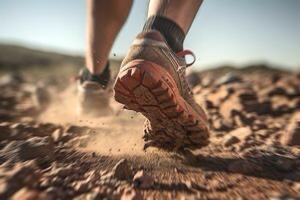
You might be hoping that I will now admit that I was just stupid, that it was pointless and that no-one else should emulate my stupidity. I am not going to go as far as to recommend it to anyone because I have neither the qualifications nor the position to be able to do that responsibly or with any authority. However, I am eternally grateful that I persisted because changing my foot strike has significantly transformed my running since.
If all the research concludes that no one foot strike is inherently more efficient and that you are best sticking with what comes naturally, how can that be?
Again, I can’t personally vouch for the science but I can speak for my own experience. I think I am at the stage now where forefoot striking is now my natural style, albeit learned. I do sometimes find myself straying towards midfoot striking and becoming a bit flat-footed when tired during long distance efforts. As a result, I do at times need to re-focus in order to reinstate better form. I still occasionally heel strike on loose, very technical descents, more often than not to slow myself down. The latter is largely deliberate.
I do use the treadmill as part of my overall training and I have concentrated a lot in the last few years on my running form, honing my cadence and foot strike to what appear to be the most efficient for me. I find it useful to do this as the level of noise (or absence of it) caused by striking the treadmill is a good indicator of running efficiency, in my experience.
My running now is more progressive, more efficient and more enjoyable. Sometimes when I am running on the flat, I force myself back to heel striking for a short stretch and it is really weird, in a bad way. Firstly, it now seems clumsy and completely counter intuitive. Secondly, it literally feels like putting on the brakes.
Greater efficiency has been reflected in an overall improvement in pace and I know that is not just attributable to other training components alone. This remains true whether on trail or tarmac. The boffins might well scoff and assert that there is no evidential basis for my wild claims. I care not a jot. I know what the experience has done for me.
Again, I am NOT saying you should follow suit, but I have absolutely no regrets as it is the single best thing I have done for my running since I started.
Since changing, I have experienced regular twinges and very minor aches in my calves and achilles tendons but that is an age thing too! My very recent calf injury has been the first significant injury in at least four years. I am fully persuaded that this injury was a direct consequence of the stresses associated with my current foot strike, perhaps combined with an element of over-training and high-impact tempo training shortly before the injury. That doesn’t mean I am immediately going to change back. Nonetheless, I do need to see it as a bit of a red flag going forward.
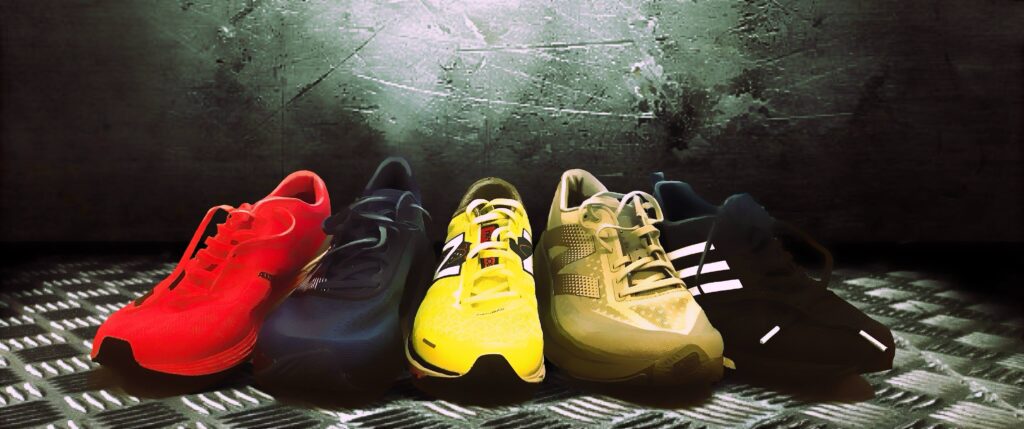
Do shoes matter?
The other aspect of foot striking that is relevant is shoe choice. As previously alluded to, a lot of emphasis is put on running gait when choosing shoes but for me, your foot strike is just as important when selecting shoes. It is not just about cushion vs neutral vs support etc etc.
Once again, much writing on the subject suggests that shoe selection should not really be affected in a meaningful way by your type of foot strike. I would suggest otherwise.
For a while, minimal ‘barefoot’ and low-drop shoes became associated with forefoot striking and high-stack cushioned shoes are more commonly associated with heel striking.
Whilst there might not be any science to suggest that any one type of shoe is better suited to a particular foot strike, experience might again disagree. As a front foot striker, I really have very little use for a lot of heel cushioning or for shoes with a high drop. This is even more the case with trail shoes and I find myself relying less and less on cushioned shoes for trail running, even over long distance. I actually find them to be a hindrance and a liability as the higher stack makes them very unstable on technical ground and cushioned shoes have very limited ground feel on rougher terrain. The benefits of higher stack and plush cushioning on trail are vastly over-stated in my view.

A lot of the recent shoe styles have wildly built-up or extended heels but this is only of relevance or use to a heel striker. However, I do very much favour shoes with good forefoot and midfoot cushioning although that generally comes with a fairly hefty heel as well. That is not to say that shoes with lots of heel cushioning have less mid or forefoot cushioning but I am likely to stray away from shoes with overly cushioned heels, particularly those where the heel flares considerably from the rear or sides of the shoe.
I have mixed experience with plated shoes and again it depends on the distance, surface and pace of my planned run. However, I do assess that plated shoes favour a mid or forefoot strike as the ‘active’ components of the plate are generally situated from the midfoot towards the front of the shoe.
It also seems that the ‘honeymoon’ period for plated and ‘supershoes’ might be drawing to a close, at least where regular training use is concerned. No-one it seems is doubting their benefits for enhanced race day performance but there are increasing notes of warning starting to emerge in terms of the more regular use of this type of shoe in training. A lot of runners are now reporting new issues and injuries as a consequence of regular training use of supershoes due to the very different anatomical stresses and strains they induce.
I find that the best shoes for me, particularly for harder surfaces, are those that have a pronounced ‘rocker’ design. By rocker, I mean that there is a pronounced convex curve to the base of the shoe. I find that this very much favours my foot strike with good energy return at the midsole and a smooth transition to toe-off.
Conversely, I have tried a number of shoes which I find to be too flat, however cushioned they might be. My experience is that I have to work harder in these shoes to maintain my strike and running form as they tend to induce more of a ‘slappy’, flat-footed strike.
For me, this is all really relevant if you read or watch a lot of shoe reviews before you choose what shoes you might buy or try. I am absolutely of the view that foot strike is a key factor in shoe selection. However, a good number of reviewers simply don’t factor it into their reviews, if they even make reference to it at all. In some respects they can’t, particularly if it is a single reviewer as many online reviewers are, because their experience of a shoe is entirely dependent on their own foot strike. Do all reviewers even make clear what their own foot strike is? I am not sure that they do.
There are several internet shoe review sites that do focus more than others on foot strike and some will go as far as to list shoes they assess to be most suited to different foot strikes. I am not going to name them because I don’t want to be seen to favour any shoe review site. I don’t rate a single one highly enough to endorse it over others. However, I do suggest that it is worth considering next time you are browsing about online, looking to buy or are listening to some talking head waxing lyrical about a shoe on video.
Your running gait, style, pace, cadence and foot strike are very particular to you. In an increasingly saturated and competitive shoe market, go into any shoe purchase armed with that information.
